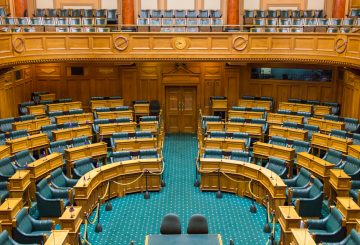Tin đồn là một hiện tượng phổ biến ở nơi làm việc, thường được coi là một cách để dành thời gian. Tuy nhiên, những cuộc trò chuyện này có thể có tác động lớn hơn đến các mối quan hệ công việc của chúng ta hơn chúng ta nghĩ. Ảnh hưởng của tin đồn có thể tích cực hoặc tiêu cực, tùy thuộc vào cách người nghe tin đồn diễn giải ý định của người nói chuyện.
Tin đồn tại nơi làm việc, là những cuộc nói chuyện không chính thức về những đồng nghiệp không có mặt, thường được coi là không hiệu quả hoặc có hại. Nhưng nghiên cứu gần đây đưa ra một bức tranh phức tạp hơn. Một số nghiên cứu cho rằng tin đồn có thể dẫn đến tình bạn, trong khi những nghiên cứu khác nói rằng nó có thể gây hại cho các mối quan hệ. Nghiên cứu của chúng tôi cho thấy những phát hiện mâu thuẫn này có thể là do sự hiểu lầm về vai trò của tin đồn trong việc định hình các mối quan hệ xã hội tại nơi làm việc.
Chúng tôi tập trung vào những người nghe tin đồn và hỏi họ cảm nhận những trao đổi này như thế nào và nó có ảnh hưởng gì đến mối quan hệ của họ với đồng nghiệp. Chúng tôi đã sử dụng ba khái niệm để hiểu tin đồn nơi làm việc. “Quan điểm trao đổi” gợi ý rằng tin đồn kết nối đồng nghiệp thông qua một quá trình cho và nhận, nơi thông tin được chia sẻ để đổi lại sự hỗ trợ của xã hội. “Quan điểm thông tin danh tiếng” xem xét cách tin đồn định hình ý kiến của người nghe về người bị tán gẫu. “Giá trị tin đồn” đề cập đến việc tin đồn là tích cực hay tiêu cực.
Nghiên cứu của chúng tôi đã kiểm tra cách tin đồn ảnh hưởng đến quan điểm của người nghe về người chia sẻ tin đồn. Chúng tôi thu thập dữ liệu thông qua các báo cáo bằng văn bản và phỏng vấn, cung cấp cho chúng tôi mô tả chi tiết về cách các sự cố tin đồn ảnh hưởng đến các mối quan hệ từ quan điểm của người nghe.
Phát hiện của chúng tôi cho thấy cách người nghe nhìn nhận tin đồn là rất quan trọng. Nếu người nghe tin rằng người nói chuyện là chân thật và trung thực, tin đồn có thể dẫn đến một tình bạn mới hoặc củng cố tình bạn hiện có. Điều thú vị là chúng tôi nhận thấy rằng tin đồn tiêu cực có thể hiệu quả hơn trong việc xây dựng tình bạn hơn là tin đồn tích cực, miễn là người nghe tin rằng người nói chuyện đang chân thành.
Nếu người nghe tin rằng người nói chuyện đang chia sẻ thông tin hữu ích và chính xác vì lợi ích của người khác, lòng tin sẽ tăng lên và các mối quan hệ công việc được củng cố. Tuy nhiên, nếu ý định của người nói chuyện được coi là tự phục vụ, lòng tin sẽ giảm và cơ hội hình thành tình bạn sẽ thấp.
Nghiên cứu của chúng tôi cho thấy tin đồn không chỉ là những lời nói nhàn rỗi, mà là một công cụ xã hội có giá trị và tiềm ẩn rủi ro. Chúng ta thường nói chuyện mà không nghĩ về lý do tại sao chúng ta làm điều đó, nhưng nghiên cứu của chúng tôi cho thấy những người khác chú ý đến lý do chúng ta tán gẫu. Vì chúng ta không thể kiểm soát cách người khác giải thích ý định của mình, điều quan trọng là phải suy nghĩ cẩn thận trước khi chia sẻ tin đồn.





























































